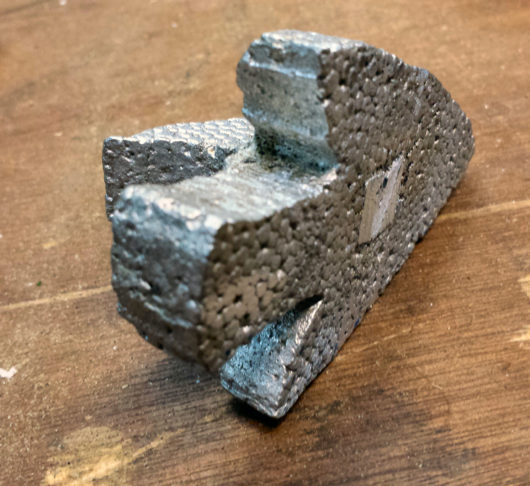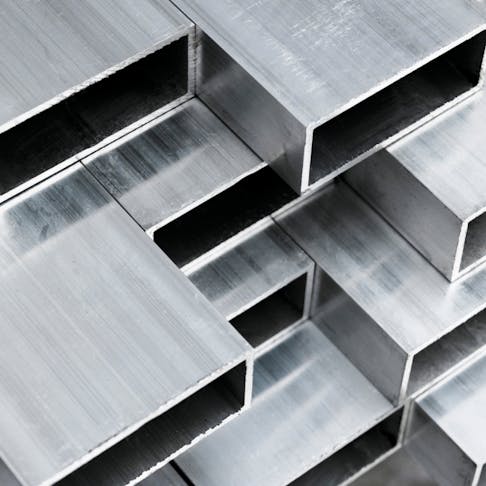Key traits of a reliable Aluminum Casting Company
Wiki Article
Understanding the Procedures Associated With Aluminum Casting for High-Quality Production
The aluminum casting procedure is a complicated yet vital procedure for accomplishing top quality manufacturing. It entails numerous phases, including mold and mildew preparation, melting, pouring, and air conditioning. Each step needs cautious focus to information to assure and prevent defects consistency. Understanding these procedures can substantially impact the last item's integrity. As one takes a look at the nuances of mold and mildew selection and air conditioning strategies, the significance of each facet ends up being significantly clear. What factors truly dictate success in this intricate procedure?
The Aluminum Casting Process Summary
The aluminum casting procedure is an extensively utilized manufacturing technique that transforms liquified aluminum right into different shapes and parts. This procedure begins by heating aluminum up until it reaches a liquid state, enabling it to stream quickly into molds. Depending upon the desired end product, different casting techniques can be utilized, consisting of sand casting, pass away casting, and investment casting. Each method has its distinct benefits and applications, affecting variables such as manufacturing volume, dimensional precision, and surface area coating.When the aluminum is poured into the mold and mildew, it solidifies and cools, taking on the form of the dental caries. After cooling down, the actors piece is gotten rid of from the mold, usually requiring additional procedures like cutting, machining, or surface area treatment to accomplish the final specifications. On the whole, the aluminum casting process is important in producing intricate and durable parts for different industries, including vehicle, aerospace, and durable goods.
Preparing the Mold And Mildew for Casting

Careful prep work additionally includes cleaning the mold to get rid of any impurities that might impact the casting process. An extensive inspection guarantees that all components fit with each other appropriately, protecting against imbalances throughout pouring. Furthermore, using a release representative can aid alleviate the elimination of the finished item.
Inevitably, careful focus to detail throughout mold preparation establishes the foundation for a successful casting operation, influencing factors such as dimensional accuracy and surface top quality of the aluminum components produced.
Pouring and thawing Aluminum
Effective melting and putting of aluminum is vital for accomplishing top quality castings. The process starts by picking the suitable heater, which should offer effective warmth transfer and preserve regular temperatures. Different sorts of heaters, such as induction or crucible heating systems, can be used based upon production needs and quantity.The aluminum should be warmed to its melting factor, generally around 660 degrees Celsius (1220 degrees Fahrenheit), while making sure very little oxidation and contamination. To enhance top quality, ingredients might be presented to boost fluidness and reduce pollutants. As soon as totally thawed, the aluminum must be held at a steady temperature before pouring.
Pouring calls for accuracy to stay clear of flaws such as air pockets or inclusions. The use of pouring ladles and regulated putting methods contributes to a smooth flow into the mold and mildew. Correct implementation of these steps is vital for generating spreadings with optimal structural honesty and surface coating.
Cooling and Solidification Strategies
After pouring, the air conditioning and solidification of aluminum play a crucial role in figuring out the final residential properties of the casting (Precision aluminum casting). Reliable cooling methods directly affect the microstructure, mechanical residential or commercial properties, and dimensional precision of the end product. Common techniques consist of forced air cooling and water spray, which promote uniform temperature level circulation and reduce thermal slopesThe solidification process starts as the liquified aluminum loses warm, changing from liquid to strong. The rate of cooling down impacts grain dimension; slower air conditioning can lead to larger grains, possibly reducing strength. In addition, using chills-- metal inserts that take in heat-- can improve cooling prices in details locations, improving total honesty.
Regulated cooling down systems are usually carried out to achieve preferred properties, such as improved ductility or toughness, by taking care of the cooling curve. Proper strategies assure reputable aluminum castings that meet rigorous market criteria.
Finishing and High Quality Control Procedures
Completing and high quality control measures are necessary to guarantee that aluminum castings satisfy the needed requirements and efficiency criteria. After the casting process, parts undergo different my blog completing operations, including machining, grinding, and sprucing up. These processes improve surface high quality, dimensional accuracy, and general appearances.Quality control measures play a pivotal duty in assuring item stability. Evaluation techniques such as visual analyses, dimensional checks, and non-destructive screening are employed to identify issues like porosity, surface area irregularities, or dimensional errors. Additionally, extensive paperwork of each stage of manufacturing aids trace any kind of issues back to their source, enabling continuous renovation.
Using analytical process control (copyright) more warranties that production procedures stay within specified restrictions, improving consistency and integrity. By incorporating completing methods and strict quality assurance measures, manufacturers can attain high-grade aluminum spreadings that meet both sector criteria and customer assumptions.
Frequently Asked Inquiries
What Types of Aluminum Alloys Are Ideal for Casting?
The finest aluminum alloys for casting consist of 319, 356, and 413, known for their exceptional fluidness, corrosion resistance, and stamina - Aluminum Foundry. These alloys are typically utilized in auto, aerospace, and numerous industrial applications for long lasting parts
How Does Temperature Affect Aluminum Casting High Quality?
Temperature level significantly affects aluminum casting top quality; greater temperature levels can improve fluidity however may result in oxidation, while lower temperature levels boost detail but boost thickness. Accomplishing ideal temperature levels is essential for balancing these opposite impacts throughout casting.What Are Common Flaws in Aluminum Castings?
Common problems in aluminum spreadings include porosity, shrinking, inclusions, chilly shuts, and surface area roughness. These issues occur from elements such as improper temperature control, contamination, and insufficient mold style, affecting the final item's stability and performance.Can Aluminum Casting Be Reused?

Just How Does Aluminum Casting Compare to Other Manufacturing Approaches?
Aluminum casting offers superior layout flexibility and material effectiveness compared to methods like forging or machining. Aluminum Foundry. Its capacity to produce intricate forms lowers waste, improving total manufacturing performance while preserving top notch standards in completed itemsThe aluminum casting process is a complex yet crucial procedure for attaining top quality manufacturing. The aluminum casting process is a commonly made use of manufacturing method that changes molten aluminum right try this site into numerous shapes and parts. Preparing the mold for casting is a vital action that directly affects the top quality of the final aluminum product. Ending up and quality control steps are crucial to guarantee that aluminum spreadings fulfill the needed specifications and efficiency standards. Temperature level significantly affects aluminum casting high quality; higher temperature levels can boost fluidness yet might lead to oxidation, while lower temperatures improve detail however rise thickness.
Report this wiki page